Elaine Velie at Hyperallergic:
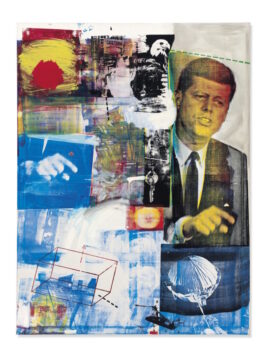 A new documentary delves into the scandals that plagued the 1964 Venice Biennale, where Robert Rauschenberg became the first American to earn the Golden Lion grand prize amid allegations of a rigged jury. Critic and director Amei Wallach’s film Taking Venice (2023) delves into the sensationalized victory, illuminating the United States government’s obsession with its international image; the mid-century art world that launched the careers of artists such as Roy Lichtenstein, Jasper Johns, and Andy Warhol; and the ultimate triumph of Pop art at the eurocentric Venice Biennale. The film will screen for the public at New York’s IFC Center on May 17 and at Laemmle Theaters in Los Angeles on May 24.
A new documentary delves into the scandals that plagued the 1964 Venice Biennale, where Robert Rauschenberg became the first American to earn the Golden Lion grand prize amid allegations of a rigged jury. Critic and director Amei Wallach’s film Taking Venice (2023) delves into the sensationalized victory, illuminating the United States government’s obsession with its international image; the mid-century art world that launched the careers of artists such as Roy Lichtenstein, Jasper Johns, and Andy Warhol; and the ultimate triumph of Pop art at the eurocentric Venice Biennale. The film will screen for the public at New York’s IFC Center on May 17 and at Laemmle Theaters in Los Angeles on May 24.
As Taking Venice recounts it, Rauschenberg’s win solidified the US as the center of the art market, and Europeans were not happy. Newspaper headlines flash throughout the film, bearing declarations that the Americans were “colonizing Europe,” among other claims.
more here.

 “There isn’t really anybody who occupies the lens to the extent that Lindsay Lohan does,” the artist Richard Phillips observed in 2012. “Something happens when she steps in front of the camera … She is very aware of the way that an icon is constructed, and that’s something that is unique.” Phillips, who has long used famous people as his muses, was promoting a new short film he had made with the then-twenty-five-year-old actress. Standing in a fulgid ocean in a silvery-white bathing suit, her eyeliner and false lashes dark as a depressive mood, she is meant to look healthily Californian, but her beauty is a little rumpled, and even in close-up she cannot quite meet the camera’s gaze. The impression left by Lindsay Lohan (2011), Phillips’s film, is that of an artist’s model who is incapable of behaving like one, having been cursed with the roiling interior life of a consummate actress. Most traditional print models can successfully empty out their eyes for fashion films and photoshoots, easily signifying nothing, but Lohan looks fearful, guarded, as if somewhere just beyond the camera she can see the terrible future. Unlike her heroine Marilyn Monroe, Phillips also observed in a promotional interview, Lohan is “still alive, and she’s more powerful than ever.”
“There isn’t really anybody who occupies the lens to the extent that Lindsay Lohan does,” the artist Richard Phillips observed in 2012. “Something happens when she steps in front of the camera … She is very aware of the way that an icon is constructed, and that’s something that is unique.” Phillips, who has long used famous people as his muses, was promoting a new short film he had made with the then-twenty-five-year-old actress. Standing in a fulgid ocean in a silvery-white bathing suit, her eyeliner and false lashes dark as a depressive mood, she is meant to look healthily Californian, but her beauty is a little rumpled, and even in close-up she cannot quite meet the camera’s gaze. The impression left by Lindsay Lohan (2011), Phillips’s film, is that of an artist’s model who is incapable of behaving like one, having been cursed with the roiling interior life of a consummate actress. Most traditional print models can successfully empty out their eyes for fashion films and photoshoots, easily signifying nothing, but Lohan looks fearful, guarded, as if somewhere just beyond the camera she can see the terrible future. Unlike her heroine Marilyn Monroe, Phillips also observed in a promotional interview, Lohan is “still alive, and she’s more powerful than ever.” When I read that Barbra Streisand’s memoir, My Name Is Barbra (2023), would be 970 pages long, a devilish chuckle bubbled up from deep within me. There was something ecstatic about this moment—How pharaonic the ambition! What an absolute thrill that a woman famous for show business—and not, say, the Nobel Peace Prize—believes her life story worthy of such an expansive word count. I am grateful that someone, somewhere, isn’t endlessly struggling to feign correct attitudes, that someone believes there is time and space to read 970 pages about the life and times of Barbra Streisand, one of those someones being Barbra Streisand.
When I read that Barbra Streisand’s memoir, My Name Is Barbra (2023), would be 970 pages long, a devilish chuckle bubbled up from deep within me. There was something ecstatic about this moment—How pharaonic the ambition! What an absolute thrill that a woman famous for show business—and not, say, the Nobel Peace Prize—believes her life story worthy of such an expansive word count. I am grateful that someone, somewhere, isn’t endlessly struggling to feign correct attitudes, that someone believes there is time and space to read 970 pages about the life and times of Barbra Streisand, one of those someones being Barbra Streisand.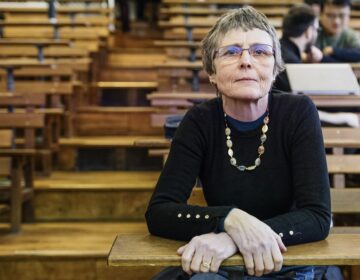 Voisin is a senior researcher at the French National Center for Scientific Research in Paris. There, she studies algebraic varieties, which can be thought of as shapes defined by sets of polynomial equations, the way a circle is defined by the polynomial x2 + y2 = 1. She is one of the world’s foremost experts in Hodge theory, a toolkit that mathematicians use to study key properties of algebraic varieties.
Voisin is a senior researcher at the French National Center for Scientific Research in Paris. There, she studies algebraic varieties, which can be thought of as shapes defined by sets of polynomial equations, the way a circle is defined by the polynomial x2 + y2 = 1. She is one of the world’s foremost experts in Hodge theory, a toolkit that mathematicians use to study key properties of algebraic varieties. Imagine you’re a middle-class, middle-aged mom in any number of American suburbs outside Atlanta, Philadelphia, Detroit, or Phoenix—the kind of civic-minded, active voter that both parties chase every election.
Imagine you’re a middle-class, middle-aged mom in any number of American suburbs outside Atlanta, Philadelphia, Detroit, or Phoenix—the kind of civic-minded, active voter that both parties chase every election. As an anthropologist, this intimacy with cats fascinates me because they represent another instance of how “human culture” is in fact made up of our relationships with nonhumans. Globally, cats have accompanied humans since ancient times, beginning in
As an anthropologist, this intimacy with cats fascinates me because they represent another instance of how “human culture” is in fact made up of our relationships with nonhumans. Globally, cats have accompanied humans since ancient times, beginning in  Rihanna, Mark Zuckerberg, bejeweled elephants and 5,500 drones. Those were some of the highlights of what is likely the most ostentatious “pre-wedding” ceremony the modern world has ever seen.
Rihanna, Mark Zuckerberg, bejeweled elephants and 5,500 drones. Those were some of the highlights of what is likely the most ostentatious “pre-wedding” ceremony the modern world has ever seen.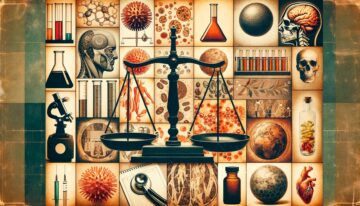 I
I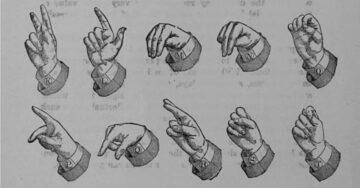 When I was editing my debut novel,
When I was editing my debut novel,  “Indelible in the hippocampus is the laughter.”
“Indelible in the hippocampus is the laughter.”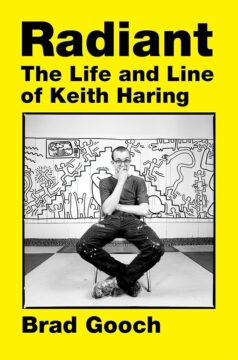 While modern audiences might be more likely to understand the import of these themes, many critics at the time discounted Haring’s work as “fast food,” as one put it, adding, “It’s a good time, it’s boogieing on a Saturday night, it’s alive, but great, no.” One curator blamed Haring’s commercial appeal for the reluctance to take his art seriously, saying, “I think Haring was so successful that other artists could not forgive him.” Gallerist Jeffrey Deitch pointed out that most artists enjoying Haring’s level of financial success would have been churning out even more sellable work. But Haring was committed to public projects such as murals, which he did for little or no compensation.
While modern audiences might be more likely to understand the import of these themes, many critics at the time discounted Haring’s work as “fast food,” as one put it, adding, “It’s a good time, it’s boogieing on a Saturday night, it’s alive, but great, no.” One curator blamed Haring’s commercial appeal for the reluctance to take his art seriously, saying, “I think Haring was so successful that other artists could not forgive him.” Gallerist Jeffrey Deitch pointed out that most artists enjoying Haring’s level of financial success would have been churning out even more sellable work. But Haring was committed to public projects such as murals, which he did for little or no compensation.